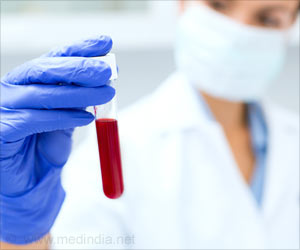A study conducted on more than 60,000 men has concluded that those who have prostate cancer are on an average four times more likely to suffer a hip fracture.
A study published in the October issue of the urology journal BJU International was conducted on more than 60,000 men and has concluded that those who have prostate cancer are on an average four times more likely to suffer a hip fracture, with rates rising to eight times in men aged 50 to 65.
Danish researchers looked at 62,865 men aged 50 and over, with an average age of just under 67.15,716 had suffered a fracture of some description and 47,149 formed the non-fracture control group.
They discovered that prostate cancer made men 1.8 times more likely overall to suffer a fracture and 3.7 times as likely to suffer from a hip fracture. But the hip fracture risk was eight times higher in men from 50 to 65 years of age. No increased risk of vertebral fractures was found by the research.
“Our study showed that more than three per cent of hip fractures in men aged 50 and over can be attributed to prostate cancer” says lead researcher Dr Bo Abrahamsen from Copenhagen University Hospital, Gentofte. “And the risk remains even when men have recovered from the disease.”
The researchers - urologists and endocrinologists from Danish hospitals attached to the University of Southern Denmark and Copenhagen University - now plan to establish a multi-centre initiative focusing on the early diagnosis and treatment of osteoporosis in men with prostate cancer.
“Prostate cancer is now the cancer that men are most likely to develop and is a leading cause of male deaths in Europe and the USA” stresses Dr Abrahamsen.
Advertisement
“Medical advances are improving survival rates, but the downside is that treatment can lead to osteoporosis, where the bone loses density and becomes more fragile. This is turn increases the risk of fractures.”
Advertisement
“Our research showed that the increased fracture risk became apparent in the early stages after diagnosis and remained pronounced even in long-term survivors” says Steen Walter, Professor of Urology at Odense University Hospital.
“Men who received hormone therapy (ADT) or had their testicles surgically removed to slow the progression of the disease were 1.7 times more likely to suffer a fracture.”
The authors point out that the research only covered the 15 per cent of ADT doses issued on prescription. The majority of the doses are issued by hospital departments, which means they cannot be traced to individual patients. So the actual impact of ADT on national fracture levels could be even greater.
Other issues were also found to lead to increased fracture rates.
“The study showed that the men in the fracture group were almost three times as likely as the control group to have suffered a previous fracture. They were also more likely to live alone and be in a lower income group” says Dr Abrahamsen.
Source-Eurekalert
GAN/C






![Prostate Specific Antigen [PSA] Prostate Specific Antigen [PSA]](https://www.medindia.net/images/common/patientinfo/120_100/prostate-specific-antigen.jpg)




